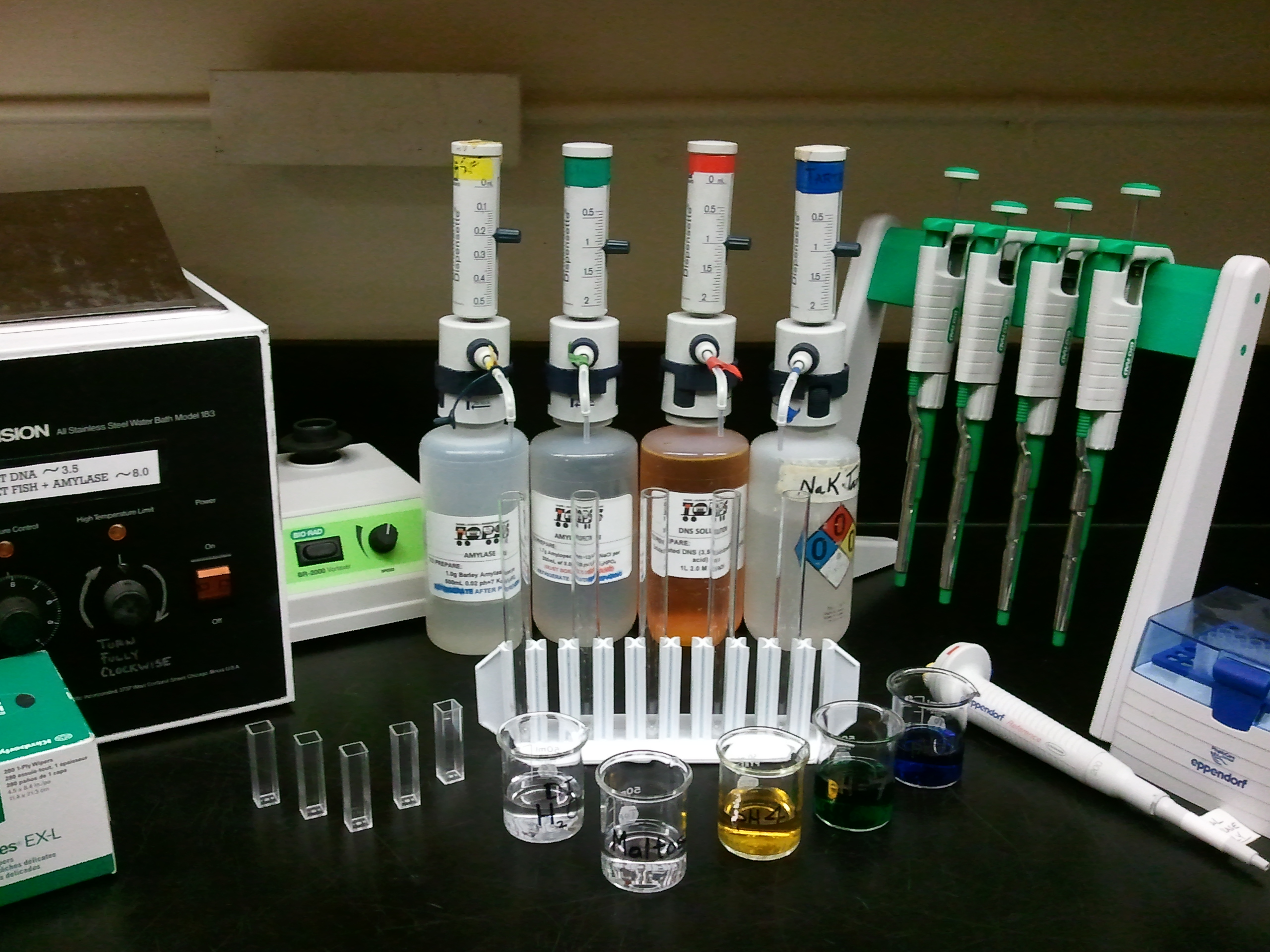FACTORS AFFECTING THE ACTIVITY OF AMYLASE

Lab Details
In this lab we study the activity of enzymes, a very important group of proteins. They speed up nearly all the important biochemical reactions within a cell (which would otherwise take an exceedingly long amount of time) and thus are an indispensable part of life on earth. Specifically, we’re looking at how certain external factors (temperature, pH, etc.) can affect the activity rate of enzymes.
For this activity we’re using the catalytic enzyme amylase, which breaks down starch (a polysaccharide made up of amylose and amylopectin) into maltose (a disaccharide) and dextrin. Humans produce amylase in the salivary glands and pancreas to aid in the digestion of starchy foods, the most common carbohydrate we consume.
